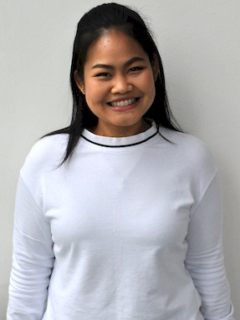Usanee Pantulap
Usanee Pantulap, M. Sc.
PhD student
Development of new compositions of ion doped bioactive glasses with angiogenic potential for hard and soft tissue engineering
Supervisor: Prof. Dr.-Ing. Aldo R. Boccaccini
Boron-containing bioactive glasses (B-containing BGs) (including borosilicate BGs) have been receiving great interested for bone tissue engineering (TE) as they exhibit the ability to form a hydroxyapatite layer to induce osteoconductivity in addition to stimulating angiogenesis and osteogenesis potentiated by the presence and release of Boron [1, 2]. Incorporation of extra ions into B-containing BGs is a convenient strategy to further improve their bioactivity, biochemical and mechanical properties. The angiogenic effect of B-containing BGs has further opened possibilities for the application of such BGs in soft tissue repair, including wound healing. The aim of this project is to develop new compositions of ion doped B-containing BGs for biomedical applications focusing on both bone and soft TE. The effect of ion doping on the glass structure, bioactivity, biocompatibility and cytotoxicity will be investigated and synergistic effects will be elucidated. Moreover, the release of ionic dissolution products during BG degradation will be quantified and their time-dependent influence on angiogenesis will be assessed in different cell culture models. Specific 3D scaffolds based on B-containing BGs for both bone and soft tissue engineering will be fabricated and characterized.
[1] P. Balasubramanian, T. Büttner, V. M. Pacheco, and A. R. Boccaccini, Boron-containing bioactive glasses in bone and soft tissue engineering, Journal of the European Ceramic Society, 38 (2018) 855-869.
[2] F. Westhauser, et al. Favorable angiogenic properties of the borosilicate bioactive glass 0106-B1 result in enhanced in vivo osteoid formation compared to 45S5 Bioglass, Biomater. Sci. (2019) (in press).

